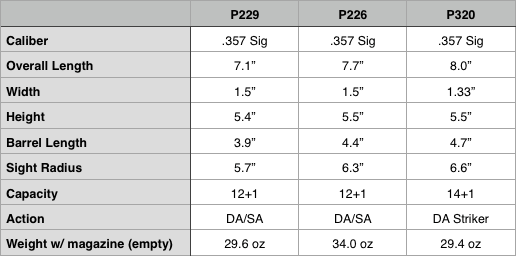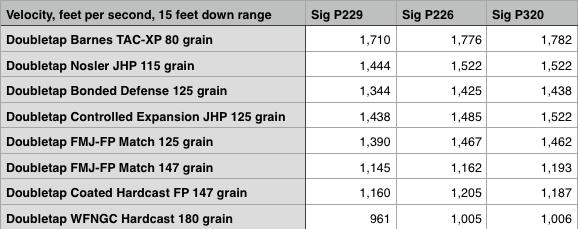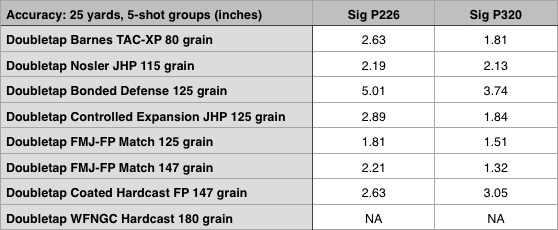By Tom McHale
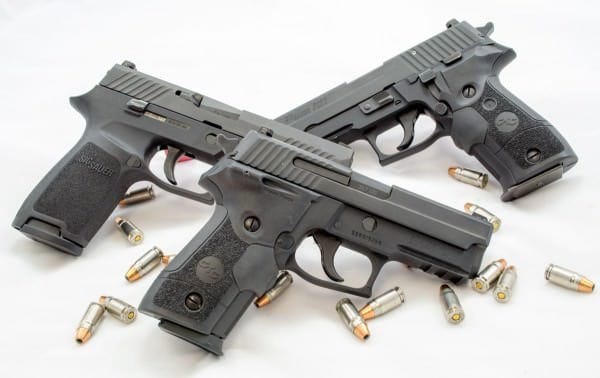

USA –-(Ammoland.com)- A couple of months ago, I wrote about the .357 SIG caliber. That got me all worked up to dig into the topic a bit more.
You can read that article here at AmmoLand for more detail about the caliber, but in case you have a short attention span like I do, here’s the short version.
The basic intent of the .357 Sig caliber is to have a cartridge suitable for semi-automatic pistols that approximates the terminal performance of the famous .357 Magnum using a 125 grain projectile.
As we know from the stories and internet anecdotes, .357 Magnum is so powerful that it’s capable of stopping a charging pachyderm even if one simply throws the cartridge at it. But seriously, over the past 80 years or so, the .357 Magnum has developed quite the reputation for stopping power, as far as pistols go anyway. That’s because a normal .357 Magnum 125 grain load leaves a 4-inch barrel at about 1,450 feet per second and delivers 584 foot-pounds of energy.

With all that said, I decided to take a closer look at some .357 Sig handgun options. What better place to look than the company with their name on the caliber?
That would be Sig Sauer. I whined, threatened (that didn’t work) and begged the Sig folks to loan me some .357 Sig guns and they did. The three guns I borrowed for a bit included the P226, P229, and the brand new P320 – all chambered in .357 Sig.
As a side note, I am continuing to grovel for a brand new .357 Sig option – the Nightmare. That one is a Sig 1911 chambered in, you guessed it, .357 Sig. I had the opportunity to shoot a prototype model at SHOT Show and I’m already hooked – it’s a sweet shooter.
As far as ammo, I needed ballistic aggressiveness and wisdom, so I went straight to the Godfather of Boom! That would be Mike McNett of Doubletap Ammunition. I suspect Mike is a .357 Sig fanatic like me because Doubletap is one of the only companies that loads it to the cartridge’s potential. As you’ll see in a minute, the numbers from various Doubletap Ammunition loads do, in fact, duplicate the performance numbers of the .357 Magnum 125 grain loading.
The Pistols
Considering the three models I tested, there are two basic action types.
The P226 and P229 are classic double-action / single-action designs. Both hammer-fired designs, the first trigger pull cocks the hammer and releases it. Subsequent shots simply release the pre-cocked hammer and have a lighter trigger press weight. For both the P226 and P229, I measured the initial double-action pull weight at 9 pounds and the subsequent single-action pull weights at 4 pounds. Both the P229 and P226 exhibited about ½-inch of travel for the double-action shot. The single-action movement was just about 1/16-inches followed by a clean and crisp break.
The P320 is a double-action striker-fired design. It’s hammerless and offers the same trigger pull weight for every shot. I measured the pull weight at 6.5 pounds on average. This one had about ⅛-inch of take-up, followed by ⅛-inch of pressure, followed by a clean and crisp break with no over travel. It’s an exceptionally smooth and crisp trigger for a striker-fired gun.
While the P226 and P226 have similar actions, the P229 is not simply a chopped-down version of the P226. Capacity between the two is the same, even though they have different dimensions. You’ll also notice that the P227 has a wider and heavier slide. I don’t have official word from Sig on the reason why, but I suspect it has something to do with overall slide mass to balance out recoil function. The cartridge dumps the same energy in a smaller gun, so something has to compensate. Just my theory though. You’ll also notice that the magazines are different and not interchangeable.
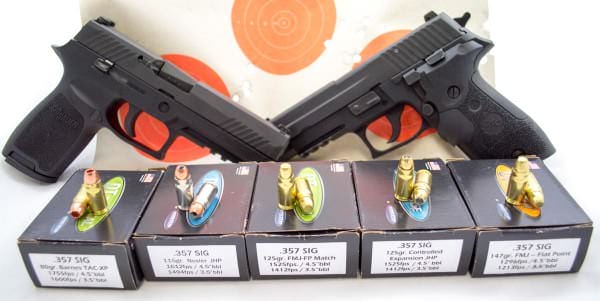
The P320 is an entirely new animal. A ground up design, one of its major claims to fame is that the serialized component is a removable action that drops into the polymer grip assembly. This means that the entire “frame” is replaceable and not subject to firearm regulation. Want a subcompact version of the gun? No problem, mail order a new grip assembly. Same with slide and barrel – they are just parts and require no federal background check or paperwork.
The serialized action pops right out by removing the takedown lever, no tools required.
The Ammunition
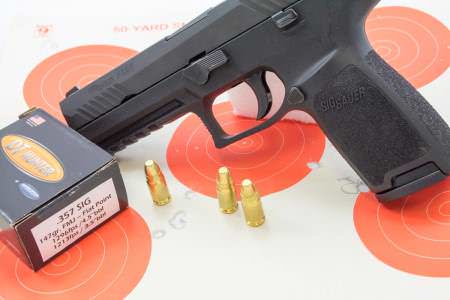
While the “classic” .357 Sig cartridge features a 125 grain projectile moving at close to 1,500 feet per second, ammunition companies like Doubletap have gotten all mad-scientist-like and developed variants that take advantage of the latest in bullet technology. For example, Barnes has developed the truly outstanding Barnes TAC-XP ( goo.gl/QqhCZF ) line of projectiles. Containing no lead, they are generally light for caliber. As a result, they move a lot faster and demonstrate predictable expansion performance with no weight loss during expansion. They’re excellent at penetrating things and expanding perfectly. As a result, they make a fine component for .357 Sig pistols. On the other end of the extreme, you’ll find heavier .355-inch projectiles like 147 grain loads in hollow-point, full metal jacket, and even hard cast configurations. And the gurus at Doubletap have even devised an 180 grain hard cast load that still moves at over 1,000 feet per second. That sounds like a great option for outdoors protection against critters of the four-legged type.
I tested eight different .357 Sig loads from Doubletap in the three different pistols. At the light and fast projectile side of the spectrum was the Barnes 80 grain load. At the opposite end was the lumbering 180 grain hard cast load, and even that was no slouch.
The Results
I tested all combinations of ammo and pistols for velocity. For accuracy, I only tested the P226 and P320 as I expected the P229 to yield similar results to the P226.
Bottom Line? .357 Sig ammo from the right manufacturer does, in fact, live up to the specs of 125 grain 357 Magnum. You’ll hear lots of folks say how .357 Sig is the same as 9mm +P+ ammo, but when you look at the actual numbers, it’s not a valid comparison. Most of the 9mm +P+ loads I’ve seen launch an 115 grain bullet at 1,300 feet per second. I’ve seen one or two that move an 115 grain projectile at 1,400 feet per second, but so far, I have yet to see one that will move a 125 grain projectile at nearly 1,500 feet per second as does the .357 Sig. The average velocity of all 125 grain Doubletap loads fired from the Sig P320 worked out to 1,474 feet per second.
While felt recoil is subjective, I don’t find the .357 Sig to have any more than a .40 S&W. Perhaps it’s a bit snappier, but that’s it. The ergonomic grip profiles of all three Sig pistols tested really helped mitigate recoil. Comparing the feel of the exact same ammo fired from a Glock 31, I found all three Sigs to be much more controllable. I believe the increased hand/grip surface area contact offered by the more rounded Sig one-piece grips dissipate recoil better than the square-shaped Glock grips, but that’s just my opinion.
With all the shooting I did, none of the three pistols exhibited any type of malfunction with any of the ammo varieties. I’ve found this to be the case with .357 Sig in general, likely because the bottleneck cartridge shape eases movement from the magazine to the chamber.
I dig the .357 Sig.
About
Tom McHale is the author of the Insanely Practical Guides book series that guides new and experienced shooters alike in a fun, approachable, and practical way. His books are available in print and eBook format on Amazon ( tiny.cc/4f5utx ) . You can also find him on Google+, Facebook, Twitter and Pinterest.

